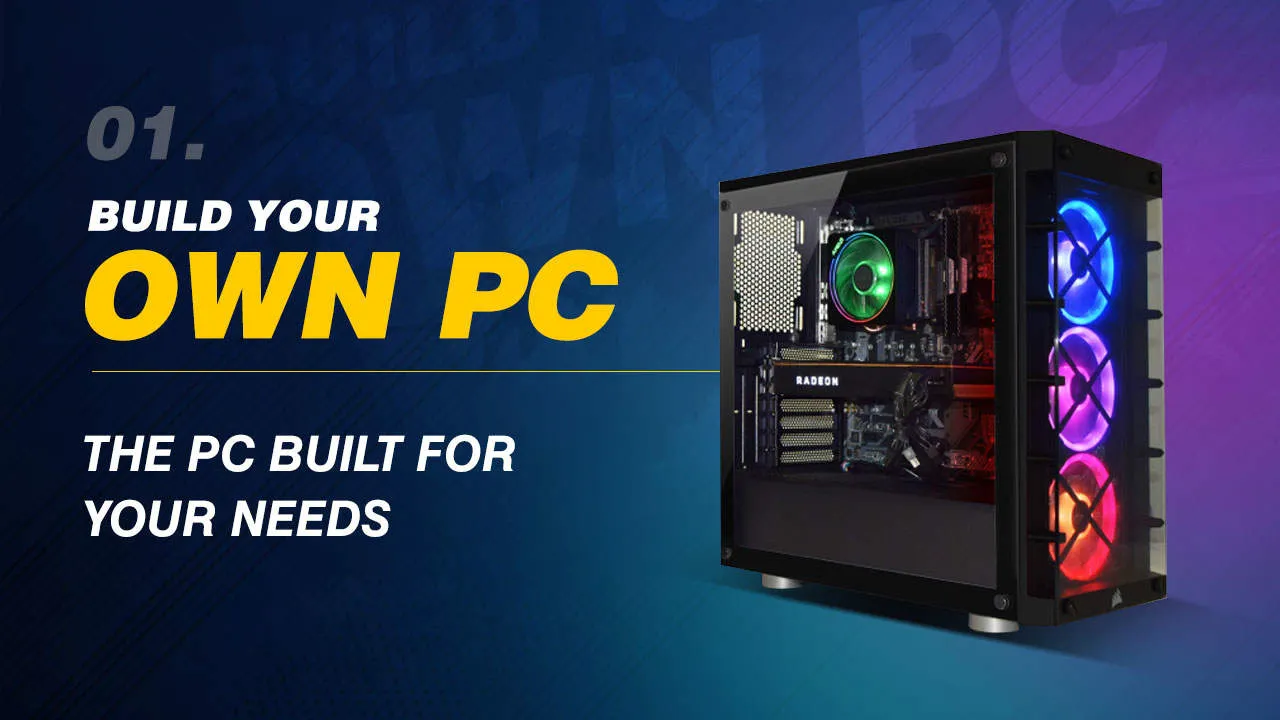Should You Build Your Own Computer?
The average person probably doesn’t need to build their own computer. You can buy a perfectly good pre-built computer for day-to-day tasks for a few hundred dollars.
It really depends on what you want to use it for.
If you’re a power user or gamer, building your own computer can give you a lot more control over what parts go into it and how they’re configured. This can result in a faster, more powerful, and more reliable machine.
It will also probably cost you more money to build your own computer than to buy one off the shelf, but it can be worth it for the extra performance.
Building your own computer can also be a fun and rewarding experience. If you’re the kind of person who likes to tinker with things and build things yourself, then building your own computer is definitely for you.
So, should you build your own computer? It depends on what you want to use it for and how much money you’re willing to spend. If you’re just looking for a basic computer for everyday use, you can probably save yourself some money by buying a pre-built machine.
But if you’re looking for a powerful computer that you can customize to your own needs, then building your own is the way to go.
A Guide on How to Build Your Own Computer
Most people believe that building a computer is a complicated and expensive process, but it can actually be quite simple and affordable. With just a few basic tools and components, you can put together a great system that will meet your needs and budget.
Building your own computer has several advantages. First, you can choose exactly the components and features that you want. Second, it can be a fun and rewarding experience. Third, you’ll save money compared to buying a similar pre-built system.
Keep in mind, it’s not only the PC you’d need to build from scratch but you’ll need to secure an internet connection as well – a router, an Ethernet cable, and a modem (if you’re not using Wi-Fi).
The most important thing to do before you start building your own computer is to research the components that you’ll need. You’ll need to consider what type of system you want, what your budget is, and what sort of performance you’re expecting. Once you have a good idea of the components that you need, it’s time to start shopping around for the best deals.
In this guide, we’ll walk you through the process of building a computer step-by-step. We’ll start with a list of required components, then move on to the assembly process. Finally, we’ll show you how to install your operating system and get everything up and running.
So let’s get started!
What You Need in Order to Build a New Computer
The first thing you’ll need is a list of components. Here’s a basic rundown of what you’ll need to build a basic computer:
CPU:
The brain of the computer. You’ll need to choose a processor that fits your budget and needs.
Motherboard:
This is the main circuit board that everything else connects to. Make sure to get a motherboard that is compatible with your CPU.
Memory:
This is where your computer stores data and programs while they are in use. Get enough memory to meet your needs, but don’t overdo it as it will add to the cost of your system.
Storage:
You’ll need a place to store all of your data, programs, and other files. A hard drive is the most common type of storage, but you can also get an SSD (solid state drive) for faster performance.
Graphics card:
If you plan on doing any gaming or graphic-intensive work, you’ll need a dedicated graphics card. Otherwise, you can save some money by using the integrated graphics that are built into most CPUs.
– Case: This is the enclosure that houses all of your components. Choose a case that fits your needs and budget.
The Process
Now that you have a list of components, you’re ready to start assembling your computer. The first step is to install the CPU onto the motherboard. Make sure to correctly identify the socket type on your motherboard and match it with the correct CPU.
Then, apply a small amount of thermal paste to the top of the CPU and carefully insert it into the socket. Once it’s in place, you can secure it with the stock cooler that comes with most CPUs.
Next, you’ll need to install the memory. To do this, simply insert the memory modules into the correct slots on the motherboard. Make sure that they are firmly seated and then lock them in place with the latches on the sides of the slots.
Now it’s time to install your storage. If you’re using a hard drive, you’ll need to insert it into a 3.5″ bay in your case.
If you’re using an SSD, you can insert it into a 2.5″ bay. Once the drive is in place, secure it with screws and connect the data cable to the motherboard.
The next step is to install your graphics card if you’re using one. Start by removing the expansion slot covers on the back of your case. Then, line up the card with the correct slot and gently insert it until it’s fully seated. Finally, screw the card into place and connect the power cables.
Now you’re ready to install your operating system! To do this, simply insert your installation disc (or USB drive) into your computer and boot from it. Follow the prompts to complete the installation process. Once it’s finished, you should be up and running with your new computer!
Building your own computer is a great way to get exactly what you want. With a little research and some elbow grease, you can put together a great system that will meet your needs and budget. So what are you waiting for? If you’re enthusiastic and have the budget, get started today!

















